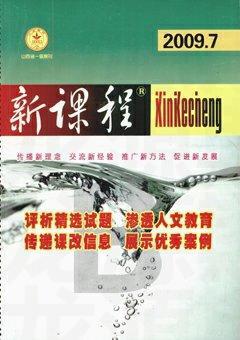浅谈中学英语词汇课堂教学
郑灵敏

Abstract: About vocabulary teaching ,the situation of traditional teaching : “easy to teach ,difficult to study.” had already come into being. The students were not interested in the boring vocabulary. Therefore, the teachers must arouse the students studying vocabulary interests, and lead students thinking and participating in the teaching actively. Through so many methods such as abundant association , bold imagination , logistic inference, consequence ,arrangement and conclusion, the teachers help the students self-study ability, and let the students master the scientific study methods, and in order to get interests, varieties and actual efficiency of lessons.
Key words: vocabulary teachingassociationimaginationconsequenceconclusion
英国语言学家威尔金斯(D.Wilkins)说过,“没有语法,人们可以表达的事物寥寥无几;而没有词汇,人们则无法表达任何事物。”可见,词汇是语言的根基。在中学英语词汇教学课堂上,许多老师一般采用“教师教单词——学生背单词——通过语法组成句子”这一传统教学方法。实践证明,这一方法是“教师易教,学生难学”。因为学生记得快,忘得也快,且不会运用。长此以往,学生学英语的根基未扎牢,学英语没了“资本”,对英语也就没了兴趣,丧失了信心。在词汇教学课堂上,老师可以加强情景教学,启发式创造教学,引导学生积极思维,让学生主动参与教学。因此,我们可以用以下教学模式:现在笔者按照词汇音、形、义之间的联系和相应的课堂教学活动对高中英语某一单元部分词汇进行如下分类,并运用以上教学模式进行教学活动设计。
一、“一刀两断”、简而化之
1.创设情景。教师板书“wheel、chair”,让学生联系已有知识。2.激发兴趣。学生发现原来这两个单词是由wheel(轮子)、chair(椅子)合成的,不由脱口而出“轮椅”。3.提问引导。类似的词还有哪些?请同学们在联系已学过的以及本单元的合成词。4.探索求解。学生通过讨论,查找工具书,找出这类词。如:本单元词汇:wheelchair、bathroom、best-seller词汇延伸:bathrobe、bedroom、reading room 、dining room5.直观感受、参与学习。学生看到“轮椅”就联想到“wheelchair”,以上所述词汇呈现于这幅画面。学生就可以用几句话把这些词“串”起来。如:After taking a hot bath in a bathroom, the old man put on his bathrobe immediately and sat in the wheelchair .He wanted to go to the bedroom so he went through the reading room and then the dinning room. Now he is lying on the bed and reading a book which is a best-seller of this year.6.悬念设置。由合成法构成的合成词很多,我们可按名词、形容词、动词、副词、代词分类,并举例说明。7.讨论查询。学生相互讨论或查询工具书对合成词进一步了解。8.点拨升华。英语单词相当一部分都是合成词,只要根据所学单词“一刀两断”甚至“三断”,就极易掌握其词义。9.理解归纳。“一刀两断”甚至“三断”,掌握其词义,根据已有知识理解词义,再根据已有词性加以运用。
二、联想、想象、猜测
1.图片演示、直观感受。教师用图片或肢体演示几大感官,学生直观感受。2.设置活动,教师演示。如:做出舌头被“烫”的动作,让学生猜其含义。3.参与学习。学生很容易猜出“舌头tongue”的读音,因其谐音“烫”,且记忆非常深刻。4.点拨升华。从“烫”联想到“舌头”,不仅是人的“舌头”而且还有事物的“舌头”。如:铃舌the tongue of a bell 。5.提问引导。要求学生讨论得出由“tongue”联想到的词组。6.探索求解。the tongue of a shoe(鞋舌) the tongue of a fire(火舌)。7.理解归纳、师生互动。以词义的这种演变方式联系到人体各个部分的词。如:the head of a bed(床头);the mouth of a river(河口);the face of a cliff(悬崖的正面);the lip of a bowl(碗边);the teeth of a saw(锯齿);the nose of a ship(船头);the eye of a needle(针眼).
总之,只有活跃了课堂气氛,形象、生动、深刻地学习词汇,而且还培养了学生观察、分析、联想、归纳、迁移及创新思维的能力和掌握一种科学的学习方法,这极有利于促进学生综合素质的提高。
作者单位:贵州省遵义市道真县道真职业教育培训中心

